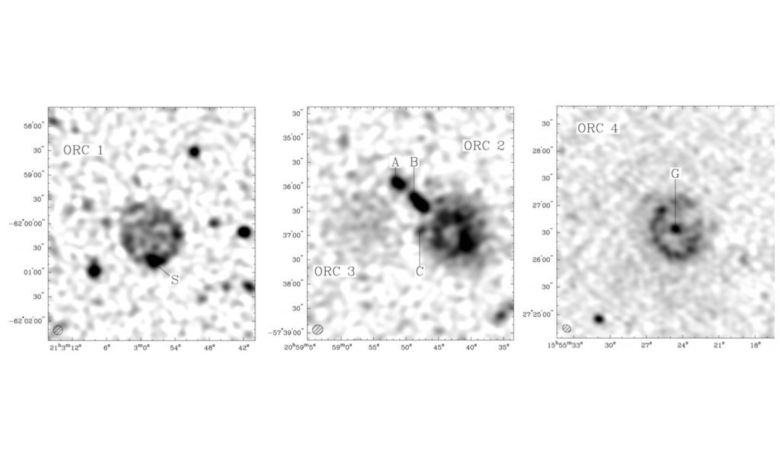Astronomers using a telescope array made up of 36 antennas working together as a single instrument, have stumbled upon an unexpected class of astronomical object that looks like a huge, circular disk and while many objects appear circular in space, these do not seem to correspond to any known type of phenomena observed do far.
Given the nature of the cosmos, circular features crop up a lot in astronomical images; planetary nebula, supernova remnants, a protoplanetary disc or a star-forming galaxy seen face on - all of these appear as round objects on the sky when looked at with a radio telescope.
Circular features can also arise from imaging artefacts, either when a telescope has not been calibrated properly or if the images have not been processed sufficiently. However, this type of round mark can be distinguished from real phenomena if they are also detected with another telescope.
Now, while scanning the skies to catalogue millions of radio sources in the skies, a team of astronomers headed Professor Norris at the Western Sydney University, Australia, have discovered what could be a new type of circular object.
Dubbed as ORCS, “Odd Radio Circles,” by the team that found them, these oddities were found by someone searching through images collected as part of the Evolutionary Map of the Universe Pilot survey (EMU-PS).
EMU's goal is to try to understand how the stars and galaxies were first formed, and how they evolved to their present state.
Currently, around 2.5 million radio sources are known about, but EMU plans to boost that number to a staggering 70 million by using the newly completed Australian Square Kilometre Array Pathfinder, or ASKAP, to hone-in on galaxies millions of light years away.
So far the ORCS have escaped detection due to their low surface brightness, which means there were unlikely to have been picked out in previous radio surveys.
Although they are faint, three are particularly bright around the edges.
Whats more, for two of the ORCs, these bright spots have been associated with galaxies, which implies that the ORCS are extremely large.
However as the distances to these objects cannot yet be ascertained, its hard to say for sure just how big they really are.
All four ORCS are also only visible in the radio portion of the electromagnetic spectrum, so they cannot be seen at infrared, optical or X-ray wavelengths.
Whatever they are, they are certainly strange; all four are at high Galactic latitude, they all appear to be around 1 arcminute in diameter, two of them have a central galaxy while two do not and two of them are very close together, implying that these two particular ORCs have a common cause.
To ensure the ORCS are not a well-known object masquerading as something exotic, the team have studied their features and ruled out a number of usual suspects as possible contenders. These include, artefacts, supernova remnants, galactic planetary nebula and lobes from a double-lobed radio galaxy, viewed side-on - all have all been cast aside as potential culprits.
If they are known of these, what could they be? “It is also possible that the ORCs represent a new category of a known phenomenon, such as the jets of a radio galaxy or blazar when seen end-on, down the “barrel” of the jet. Alternatively, they may represent some remnant of a previous outflow from a radio galaxy,” write the authors of the research paper which has yet to be peer-reviewed by other scientists.
However, add the team, “no existing observations of this phenomenon closely resemble the ORCs in features such as the edge-brightening or the absence of a visual blazar or radio galaxy at the centre,” so the objects true identity, for the moment, is still something of a mystery.
Though how long they will remain a mystery is anyones’s guess, as the team also identified six even fainter candidate ORCs that could help them with their studies.
As such, “further work is continuing to investigate the nature of these objects,” conclude the team in their paper.











